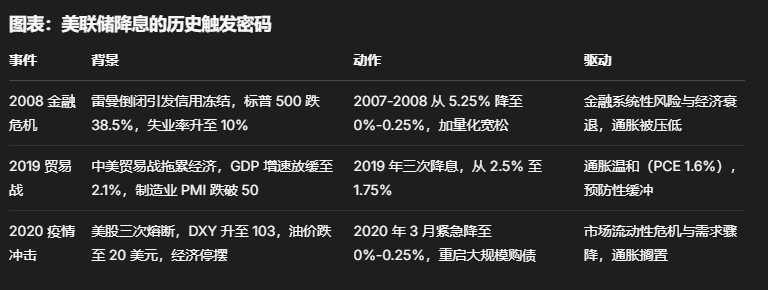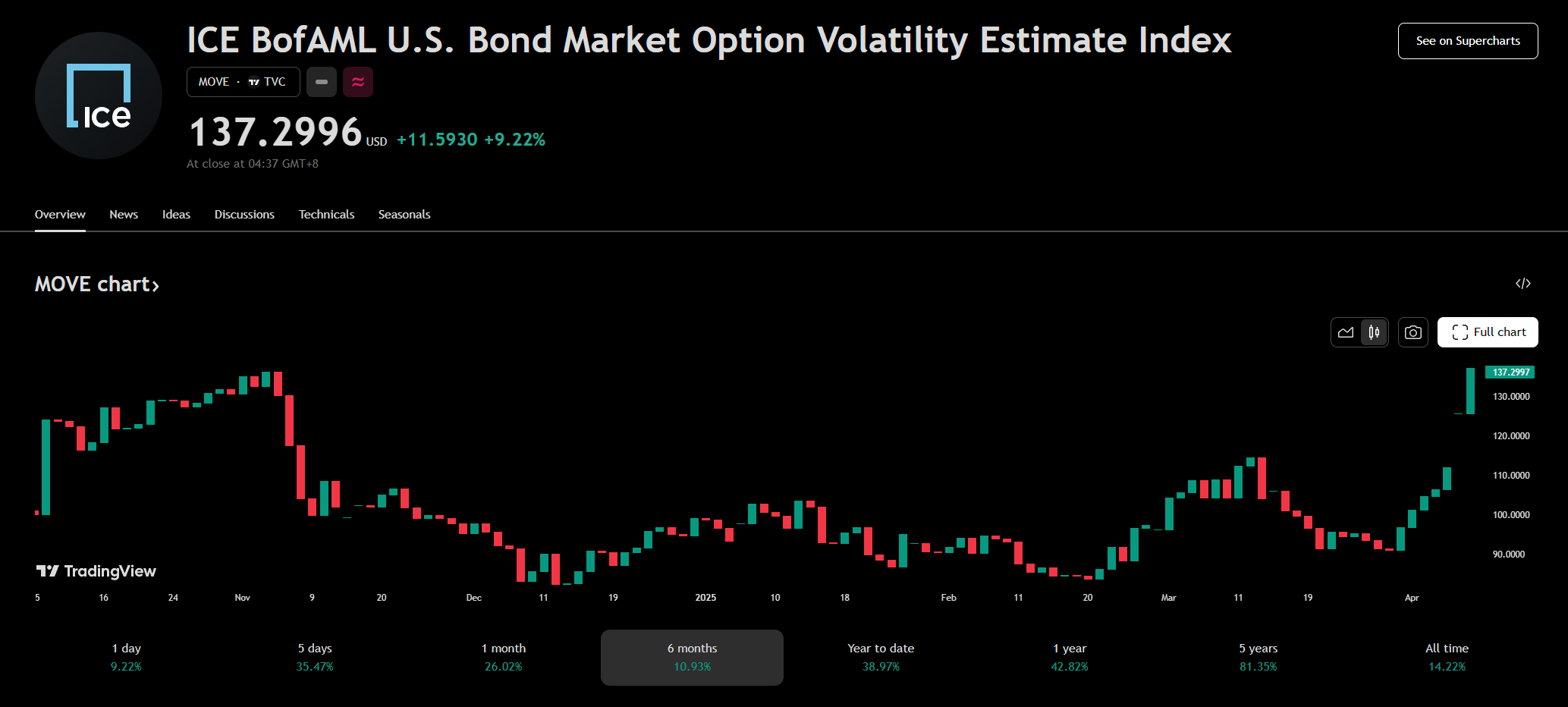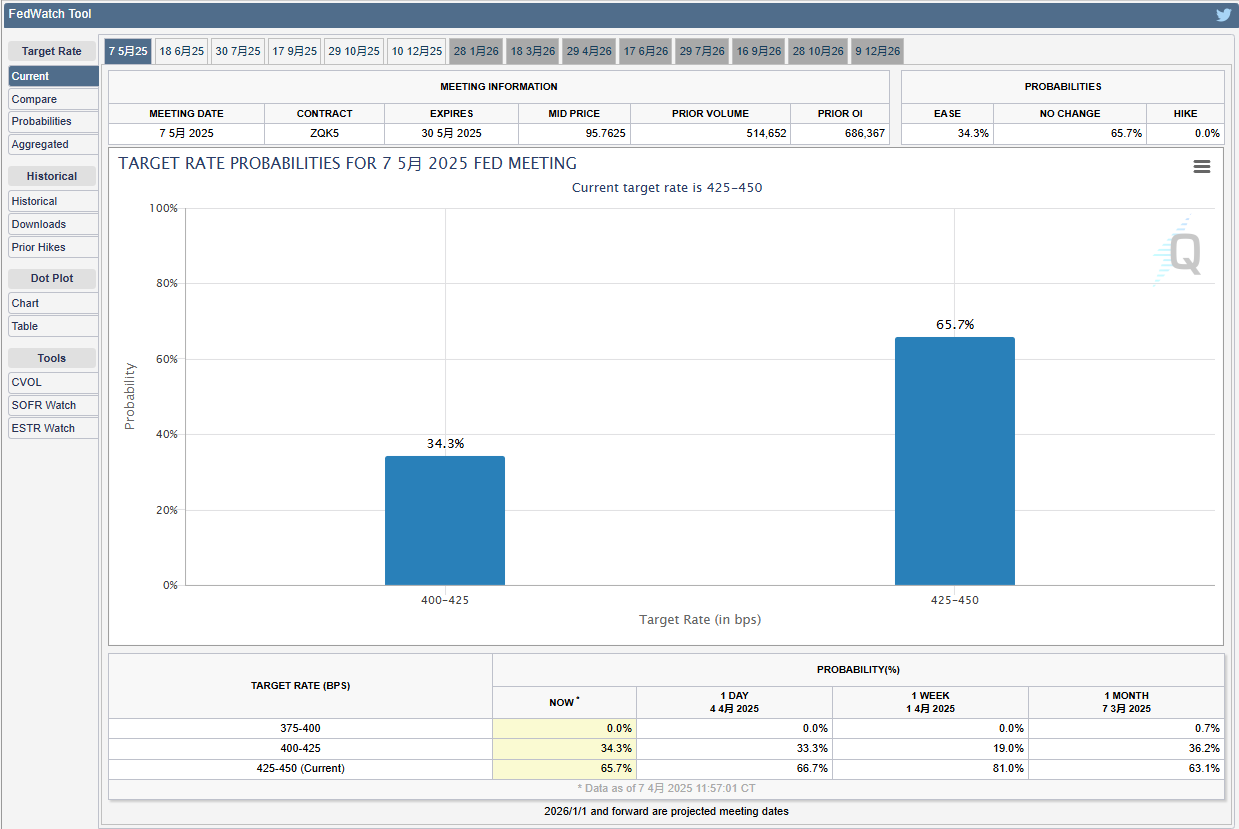The market is looking forward to when will the Federal Reserve take action to "print money"?

Reprinted from panewslab
04/09/2025·1MIn April 2025, the Trump administration's tariff stick once again shocked the global market. US stocks plummeted and crypto assets were bleeding. Bitcoin fell by more than 10% in two days, Ethereum once plummeted by 20%, and the amount of liquidation in 24 hours was as high as US$1.6 billion. Investors were frightened and turned their attention to the Federal Reserve, hoping that it would cut interest rates to save the market. However, the Fed's silence is disturbing: Where is the critical point for interest rate cuts? Under the double impact of hidden inflation concerns and economic pressure, when will the Federal Reserve loosen its policies? This is not only a data game, but also a contest between market confidence and macro game.
Historical Mirror: Trigger password for interest rate cuts
The Fed's decision to cut interest rates has never been arbitrary, but a thoughtful choice under crisis or economic inflection points. Looking back at the critical moments in recent years, we can extract the triggering logic of interest rate cuts from historical scripts to provide a reference for the current tariff crisis. The following is a detailed analysis of three landmark interest rate cuts, revealing the environment and motivation behind it.

The 2008 Financial Crisis
- Emergency rescue background for systemic collapse : In September 2008, Lehman Brothers' bankruptcy ignited a global financial tsunami, and the subprime mortgage crisis exposed the fragility of the US real estate bubble. The interbank credit market was frozen, with the S&P 500 falling by 38.5% for the whole year, and the Dow Jones Index plummeted 18% in a single week in October. The unemployment rate surged from 5% at the beginning of the year to 7.3% at the end of the year and climbed to a peak of 10% in the following year. The VIX panic index soared above 80, and the US dollar LIBOR-OIS spread soared from 10 basis points to 364 basis points, indicating that interbank trust was almost disintegrating.
- Rate cuts : The Federal Reserve took the lead in cutting interest rates by 50 basis points in September 2007, down from 5.25% to 4.75%, and then accelerated its action in 2008, with two interest rate cuts in October totaling 100 basis points, and in December it fell to an ultra-low range of 0%-0.25%. At the same time, quantitative easing (QE) was launched to inject trillions of dollars of liquidity into the market.
- Trigger password : financial systemic risks (bank bank failure, credit freeze) and economic recession (continuous negative growth in GDP). Inflation pressure was quickly covered up in the early stages of the crisis, with core PCE falling from 2.3% to 1.9%, making room for interest rate cuts. The Federal Reserve prioritizes financial stability and employment, and "returning to zero" interest rates has become inevitable.
Trade War 2019
- Background of the buffering strategy for preventive interest rate cuts : From 2018 to 2019, the Sino-US trade war heated up, the United States imposed tariffs on Chinese goods, and global supply chains were under pressure. U.S. GDP growth slowed from 2.9% in 2018 to 2.1% in mid-2019, with manufacturing PMI falling below 50 to 47.8, indicating a contraction in economic activity. The S&P 500 fell 19% at the end of 2018, with the 10-year and 2-year U.S. Treasury yield curve inverting, issuing a recession warning. Corporate investment confidence declined, but the unemployment rate remained stable at a low of 3.5%.
- Rate cuts : In July 2019, the Federal Reserve cut interest rates by 25 basis points, downgraded from 2.25%-2.5% to 2%-2.25%, and fell by 25 basis points in September and October, and finally fell to 1.5%-1.75%, with a cumulative decline of 75 basis points throughout the year.
- Trigger password : signs of slowdown (decreased manufacturing, decline in investment) and global uncertainty (trade war), rather than a full recession. Inflation was moderate, with core PCE remaining at around 1.6%, below the 2% target, providing room for preventive rate cuts. The Fed intends to buffer external shocks and avoid a hard landing in the economy.
The impact of the epidemic in 2020
- Background of decisive intervention under the liquidity crisis : In March 2020, the new crown epidemic spread around the world, with US stocks breaking three times on March 9, 12 and 16. The S&P 500's maximum single-day decline reached 9.5%, and the VIX panic index soared to 75.47. The dollar liquidity crisis emerged, investors sold their assets in exchange for cash, and DXY rose sharply from 94.5 to 103, hitting a three-year high. Crude oil prices collapsed, WTI fell below $20, and the global economy faced the risk of shutdown.
- Rate cuts : On March 3, 2020, the Federal Reserve urgently cut interest rates by 50 basis points to 1%-1.25%; on March 15, it urgently cut interest rates by 100 basis points to 0%-0.25%, and restarted large-scale QE, and the scale of bond purchases quickly expanded to hundreds of billions of dollars.
- Trigger password : liquidity exhaustion in financial markets (selling of US bonds, freezing of credit markets) and risk of economic shutdown (lockdown measures have caused a sharp drop in demand). Inflation was ignored in the early stages of the crisis, with core PCE falling from 1.8% to 1.3%, and the Fed prioritized stabilization of the market and preventing systemic collapse.
These cases reveal that the Fed rate cut usually revolves around three core conditions:
- Inflation lows may be controllable : Inflation was suppressed by the crisis in 2008 and 2020, and inflation was below target in 2019, paving the way for interest rate cuts.
- The economy is under significant pressure : whether it is a recession (2008), a slowdown (2019), or a shutdown (2020), economic weakness is the key driver.
- Financial market collapse : systemic risks such as credit freeze (2008), liquidity crisis (2020), forced the Federal Reserve to take decisive action.
Current dilemma: a tug-of-war between inflation and turmoil
On April 7, 2025, the global market was panicked due to Trump's tariff policy. US technology stocks fell sharply, with the S&P 500 falling intraday by more than 4.7% at one point, and the crypto market fell simultaneously. However, Fed Chairman Powell expressed calm last Friday: "The economy is still in good shape and we will not rush to react to market turmoil." Core PCE inflation remained at 2.8%, above the 2% target, and tariffs could further push up prices, which casts the outlook for interest rate cuts.
At the same time, market signals are aggravating tensions. According to Tradingview data, the Bond Volatility Index (MOVE Index) broke through 137 points on April 8, setting a "seven consecutive positives", approaching the 140-point "critical line" predicted by Arthur Hayes. Hayes once warned: "If the MOVE Index rises, traders of leveraged Treasury and corporate bonds will be forced to sell due to increased margin requirements. This is the market the Fed is vowing to defend to the death. Breakthrough of 140 is a signal of loosening after the collapse." The current index is only one step away from this threshold, suggesting that pressure in the bond market is accumulating.

Goldman Sachs analyst Lindsay Matcham pointed out that the widening of credit spreads may be another trigger for the Fed's move. If the spread of high-yield bonds rises to 500 basis points, corporate financing difficulties and job market weakness may emerge one after another, forcing Powell to turn loose as in 2018. At present, the interest rate spread of high-yield bonds has reached 454 basis points, not far from the warning line, and the market has smelled the risk.
External voice: consensus in differences
The market has significant differences in judgment on the timing of the Fed's interest rate cut. BlackRock CEO Larry Fink poured cold water: "The possibility of the Federal Reserve cutting interest rates four or five times this year is zero, and interest rates may rise instead of falling." He believes that Powell's tough attitude is due to the stability of non-agricultural data and the hidden concerns of inflation, and it is difficult to consume the policy "bullets" in the short term. In contrast, Goldman Sachs predicts that if there is no recession, the Federal Reserve may cut interest rates three times in a row to 3.5%-3.75% from June; if the recession triggers, the decline can reach 200 basis points.
The Fed also revealed anxiety. On April 8, Chicago Fed Chairman Goulsby said: "The hard data of the U.S. economy performed unprecedentedly well, but tariffs and countermeasures may reappear supply chain disruptions and high inflation, which is worrying." This uncertainty puts policymakers in a dilemma: interest rate cuts may fuel inflation, and wait and see may miss the rescue window.
The critical point of interest rate cut: signal and time point
Based on historical experience and current trends, the Fed's interest rate cut may require one of the following conditions:
- Inflation easing: Core PCE fell back to 2.2%-2.3%, and the tariff effect proved to be controllable.
- Economic weakness: Unemployment rate rises to 5% or GDP growth slows significantly, and tariff shocks appear.
- Financial turmoil intensifies: MOVE Index breaks through 140, or the interest rate spread of high-yield bonds exceeds 500 basis points, accompanied by the stock market falling by more than 25%-30%.
Currently (April 7, 2025), CME's "Federal Observation" shows that the probability of a 25 basis point cut in May is 54.6%, and the market expects to be a slight lead. However, the bond market has not yet fully priced, with the 10-year U.S. Treasury yield fluctuating between 4.1% and 4.2%, and the liquidity crisis has not yet emerged. The Fed is more likely to use lending tools first rather than cutting interest rates immediately.

Future point prediction:
- Short-term (May): If the MOVE Index breaks through 140 or the credit spread approaches 500 basis points, coupled with the further decline in the stock market, the Federal Reserve may cut interest rates by 25-50 basis points in advance.
- Medium term (June-July): Tariff effect appears in the data. If inflation falls and the economy slows down, the probability of interest rate cuts will increase, or a cumulative reduction of 75-100 basis points.
- Crisis Scenario (Q3): If the global trade war escalates and the market fails, the Federal Reserve may urgently cut interest rates and restart QE.
The tariff crisis is like a stress test, testing the Fed's patience and bottom line. As Hayes said, bond market volatility may be an outpost for interest rate cuts, while widening credit spreads may be a “fuse.” At present, the market is swaying in fear and expectation, but the Federal Reserve is waiting for a clearer signal. History has proved that every plunge is the starting point of reshaping, and this time, the key to a rate cut may be hidden in the next jump of MOVE Index, or the critical breakthrough of the credit spread. Investors need to hold their breath because the storm is far from over.


 chaincatcher
chaincatcher